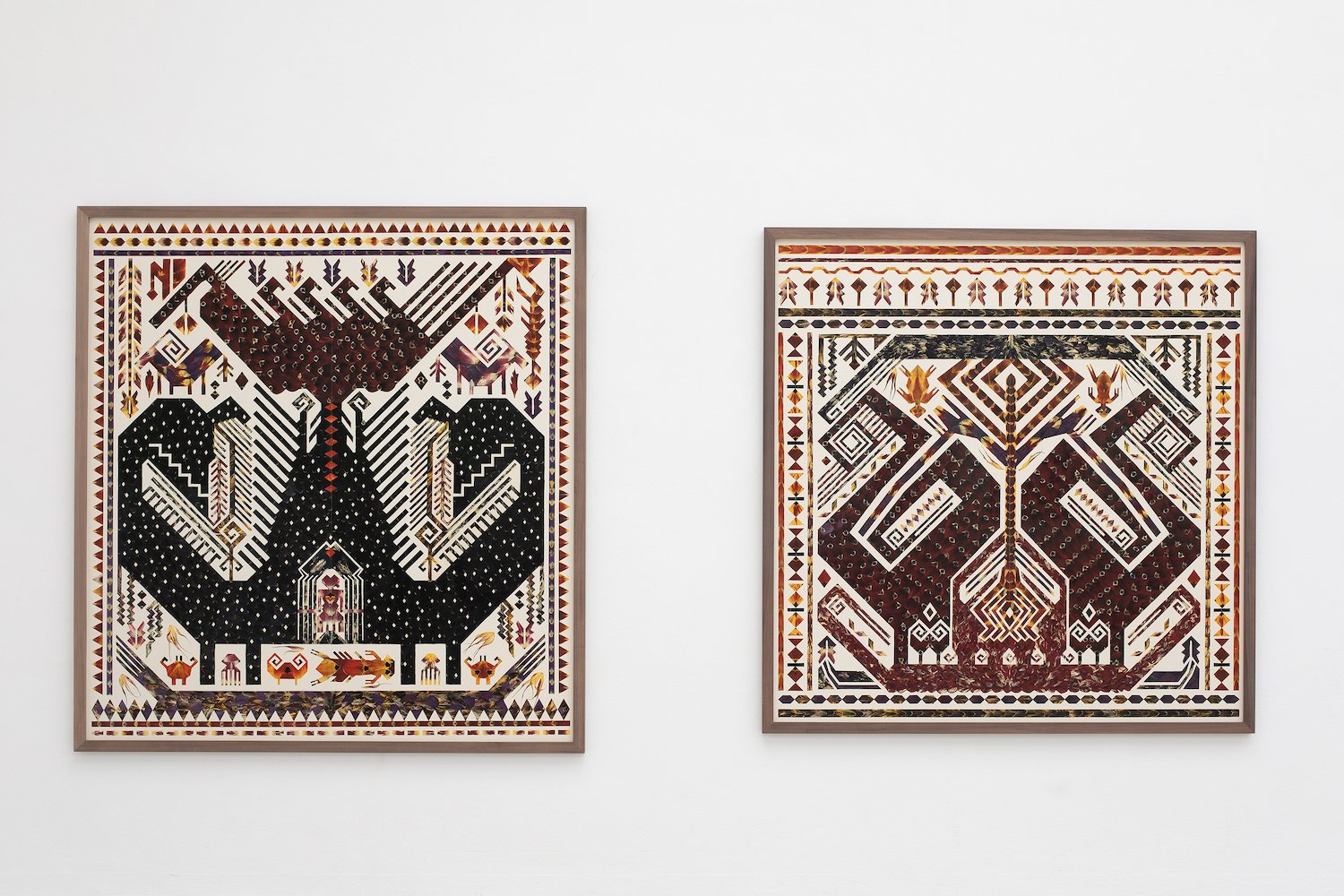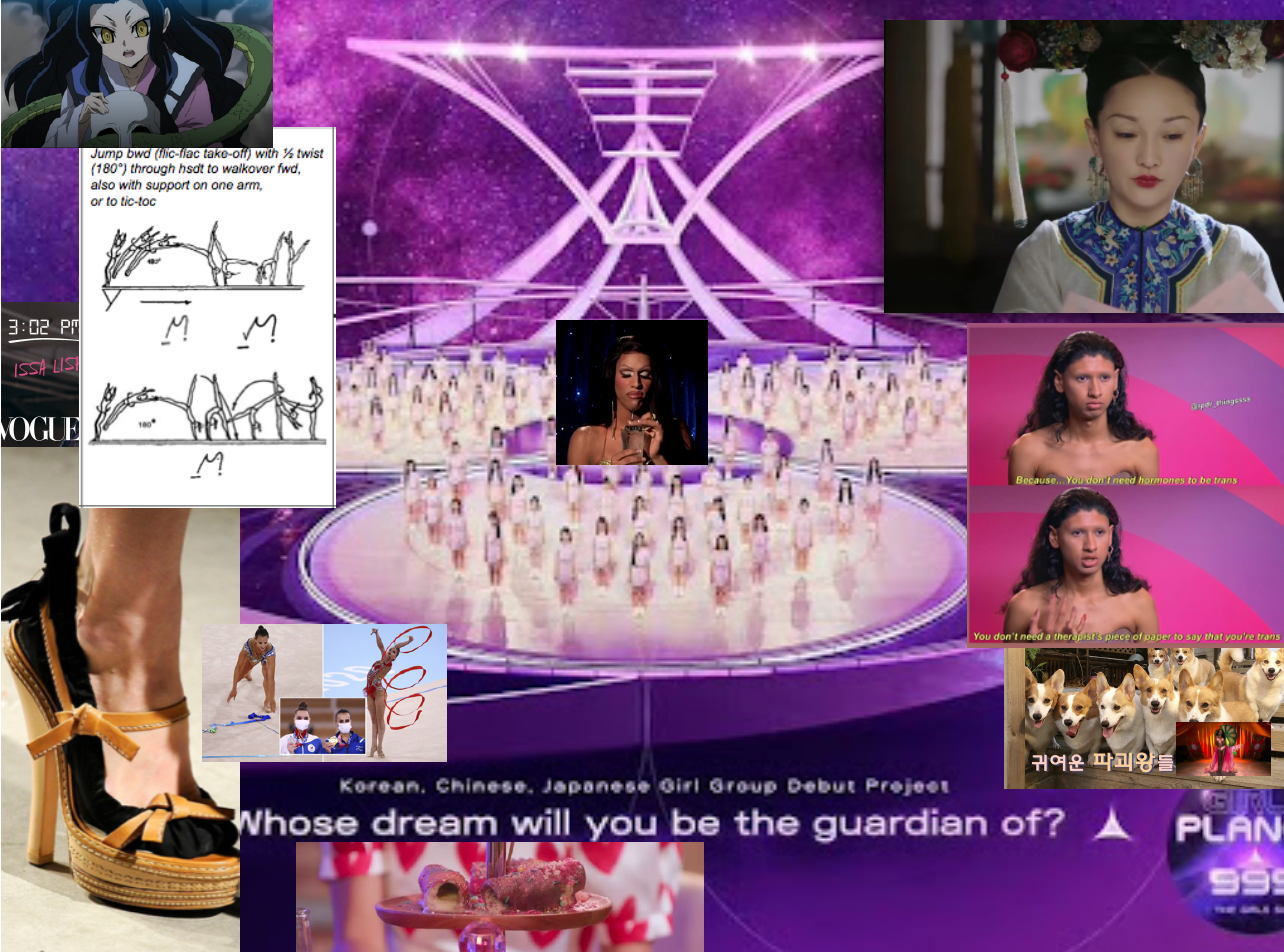Spiritual Journeys with Jennifer Tee
On voyages, deep time and the soul in limbo
By Ian Tee
This essay is a part of CHECK-IN 2023. It can be downloaded in full for free online. Or if you would like to support the work that we do, consider giving a small amount for the epublication, or purchase a limited-edition physical copy.
Jennifer Tee, 2022. Photo by Ernst van Deursen.
Jennifer Tee is a Dutch artist with Chinese-Indonesian heritage. Central to her multifaceted practice is an interest in what she calls “the soul in limbo”, an in-between state on the border between the present and the possible. Jennifer’s works evince a rich material experimentation and they take form across sculpture, installation, performance, and collage. Her institutional solo exhibitions include: ‘Still Shifting, Mother Field’ (2022-23, Kunstinstituut Melly and Wiener Secession), ‘Let it Come Down’ (2017, Bonner Kunstverein and Camden Arts Centre), and ‘The Soul in Limbo’ (2016, Cobra Museum), amongst others.
In this conversation, Jennifer unpacks the utopian concepts evoked in her recent works. She also takes stock of key moments in her artistic journey, reflecting on how they have contributed to her development and working methods.
Jennifer Tee, ‘Tampan World Mountain, Ancestral Creatures’ (left) and ‘Tampan Sessile Beings, Sacred Shrine’ (right), 2022, exhibition view in ‘Still Shifting, Mother Field’, 2022, Secession, Vienna. Photo by Oliver Ottenschläger.
I would like to begin this interview by discussing ‘Tampan Tulip’ (2014 — present). They are a series of collages made from pressed tulip petals, with motifs taken from Tampan weavings. Could you talk more about the origins of this series and how they relate to your biography?
Tampan and Palepai are 17th and 18th century ceremonial weavings from the South of Sumatra. They were used in rites of passage, such as a marriage and burial. A recurring motif is that of the ship, which represents the passage through different life stages. At the mast of the ship is often a tree of life; while humans, animals and plants are depicted on the vessel. I feel a strong connection to these “ship cloths” because of their symbolic meaning. The life journeys described through these ships relate to topics such as migration, displacement, and colonial histories. At the same time, I am interested in the spiritual journey and its relationship to our human and non-human ancestors.
The ‘TampanTulip’ works also refer to one voyage in particular–the boat trip my father and his family had to undertake from Java to the Netherlands in the 1950s because of the precarious position of Chinese Indonesians after Indonesia’s independence. My maternal grandfather was a tulip grower and exporter of tulip bulbs. He frequently travelled from Rotterdam to New York on a ship as well. The tulip collages are seasonal, and hence they can only be made during the tulip season in the spring. I harvest the tulips and dry the petals in the studio, before making the actual collages.
Could you explain what this notion of “the soul in limbo” means to you?
In general, my art work is concerned with what I call “the soul in limbo”, a conceptual, mental, psychological, and physical space. It is an attempt to define life’s complex narratives that exist between body and mind, between cultures, identities, and belief systems. Throughout my work, I have been interested in these in-between places.
Jennifer Tee, ‘Still Shifting, Mother Field’, 2022, installation view at Secession, Vienna. Photo by Oliver Ottenschläger.
“In general, my art work is concerned with what I call “the soul in limbo”, a conceptual, mental, psychological, and physical space. It is an attempt to define life’s complex narratives that exist between body and mind, between cultures, identities, and belief systems. ”
Jennifer Tee, ‘Crystalline Floorpieces/ Deep Ocean-Snake’ (detail), 2022, hand dyed wool, 445 x 310cm. Photo by Ernst van Deursen.
In your solo exhibition ‘Still Shifting, Mother Field’, there are a few large hand-dyed wool pieces such as ‘Crystalline Floorpieces/ Deep Ocean-Snake’ (2022), which are presented directly on the floor. What was your thought process behind this mode of presentation as well as the artwork’s intriguing title?
The crystalline floor-pieces are a series of knitted works made from hand-dyed wool. They are presented on the floor, and some have ceramics placed on them. Their shapes are derived from crystalline forms and structures. With the work ‘Crystalline Floorpieces/ Deep Ocean-Snake’ (2022), I wanted to refer to geological time, the long history of our planet and the deep mysteries hidden in our oceans.
At unannounced moments in the exhibition, visitors are invited to lie down on edges of the floor-pieces. A performer would read to them pages from the “eco-stack of books”. These books focus on the delicate and nuanced relationships between nature and culture, language and perception.
Jennifer Tee, ‘Still Shifting, Mother Field’, performance conceived together with Miri Lee, dancers: Bita Bell, Jessica Comis, Samuel Minegibe Ekeh, Timothy Nouzak, Seraphim Schuchter, Mariia Shurkal, Secession 2022. Photo by Ernst van Deursen.
As a follow-up to the previous question, the exhibition also features the ‘Transient Shroud/ Being less Human’ works which are installed on low platforms in a manner that recalls museological displays. Could you talk about the objects in this installation and how they are activated by the performance?
The shrouds are made of a novel fabric composed of pineapple offcuts and recycled buffalo hide. They are spread over low pedestals and vaguely suggest the shape of a human body in the process of disappearing. The artwork is activated in weekly performances that are developed together with choreographer Miri Lee. The dancers are covered by the shrouds while they interact with the textile sculptures. The performers are in a suspended moment of falling asleep, or they form a cocoon, or recall the metamorphosis of the snake shedding its skin. These gestures are a proposal for us to be less human, less present. Instead, we are called to transform and weave ourselves back into the history of deep time, and reconnect with our natural environment.
Jennifer Tee, ‘Covert Entwined Heart’, 2004, exhibition view at the 26th Sao Paulo Biennial, 2004. Image courtesy of Galerie Fons Welters.
Jennifer Tee’s presentation at the 26th Sao Paulo Biennial, 2004. Image courtesy of Galerie Fons Welters.
Could you share a decision or event that marked a significant moment in your path as an artist?
I became a mother just as I started making the tulip collages, and that was an important period for me. I structured my practice around the tulip collages as my schedule became dedicated to the springtime and going to the tulip fields. As such, my practice is committed to the demands of my working process rather than exhibition deadlines.
When have been milestone achievements for you as an artist, and why have they been particularly memorable?
My first most memorable achievement was being part of the São Paulo Biennial in 2004 with a solo presentation. Then, there were still country representations in the biennial. I had the opportunity to work in Brazil for several months. I was able to work with performers there and incorporate local materials in my sculptures too. This was early in my artistic practice. Travelling and being immersed in other cultures influenced my art-making and thinking. The way art and life could meet fluidly was something I also wanted to express in my work.
Around that time, I also started to travel to China often. It was first for a residency in Xiamen and later to Jingdezhen, the birthplace of porcelain. I tried to go every year for almost a decade to work with ceramics. It was a formative experience meeting other artists and artisans, as well as to see the world not only from my vantage point in Europe.
Jennifer Tee working on tulip collages in her studio. Photos by Ernst van Deursen.
Could you describe your studio and how it has evolved over the years to become what it is today?
My studio is in the Southeastern part of Amsterdam. My studio has been in that area since the early 2000s, and I have moved only once. It is a culturally diverse region with people from all over the globe, and a significant population from Suriname and the African continent. I see my studio mostly as a functional space where I work. Hence, it is not decorated at all. I have bookcases and desks. I try to be there on most days during the week, often travelling there on my bicycle. In addition, I have a storage space just outside Amsterdam where I keep larger works.
Jennifer Tee’s presentation at the Rijksakademie, 2002. Image courtesy of Galerie Fons Welters.
Jennifer Tee, ‘Still Shifting, Mother Field’, 2022, installation view at Secession, Vienna. Photo by Oliver Ottenschläger.
What do you think were the unique advantages and disadvantages you had when you were an emerging artist, and with establishing your place since then?
In the beginning, I travelled often and was participating in residencies all over the world.This included the Rijksakademie, which is a fantastic place to meet other artists and for learning. Now, I have a family and a daughter, so I travel less and work mostly from the studio. The wonderful thing about having a long practice is that you can trust yourself more. I feel more confident in the work I pursue.The most important thing is to have a healthy studio practice and to enjoy what I do.
Are there current/upcoming projects you would like to share?
Currently, I have a solo exhibition ‘Still Shifting, Mother Field’ at Kunstinstituut Melly in Rotterdam, the Netherlands. It is a travelling show which was first presented at Secession in Vienna, Austria in the fall of 2022.The Rotterdam iteration brings together the entire series of tulip collages I have made so far. In addition, I created new floor-pieces, ceramics, and the large-scale performance with the shrouds. In the exhibition, I explore the concept of “the wandering spirit” or “lost soul”, as well as how we can re-find and redefine human’s place in the cosmic world and our surrounding natural environment.
I am also part of a group exhibition ‘Indigo Waves and Other Stories: Re-Navigating the Afrasian Sea and Notions of Diaspora’ at Gropius Bau in Berlin.The show brings together artists, musicians, writers and thinkers to shed light on some of the historical, cultural and linguistic links between the continents of Africa and Asia.
This interview has been edited.
This essay is a part of CHECK-IN 2023. It can be downloaded in full for free online. Or if you would like to support the work that we do, consider giving a small amount for the epublication, or purchase a limited-edition physical copy.
























